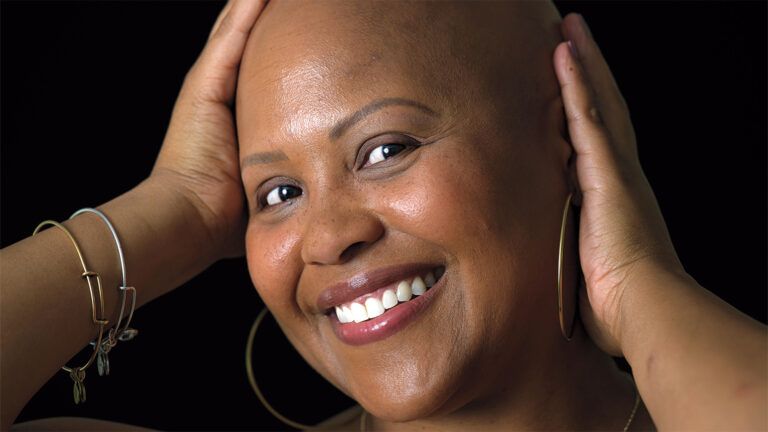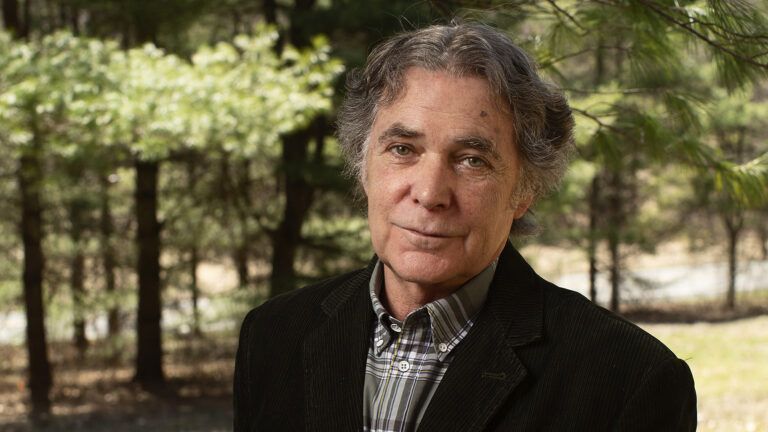An Army private during World War II, stationed in the South Pacific, hears the voice of his mother thousands of miles away in Baltimore, telling him to duck just seconds before a bullet whizzes over his head. At that precise moment, his mother, at the hospital recovering from brain cancer, sits up and yells, “Duck, James!”
A boy whose mother died when he was a toddler is visited often in his dreams by a woman with curly brown hair and blue eyes. She comforts him. The boy has no memory of his mother and no photos of her. Until, as an adult, he sees a picture. An image identical to the woman in his dreams.
A struggling young woman is visited in the middle of the night by her deceased mother, who tugs at her ankle and warns her to break up with the guy she’s seeing.
By themselves, each story is extraordinary, baffling even. Except in Mysterious Ways, where each can be found and where they’re almost routine. Nearly every issue, it seems, features a story of someone seeing or hearing their mother from miles away or across the heavenly divide. Maybe it’s because my mother died five years ago and I know how comforting it would be to be visited by her. Maybe it’s my need to try to understand the workings of the universe. But these stories stay with me and leave me wondering: Is it only in Mysterious Ways that mothers appear so often and so miraculously? Are these dreams, visions and visitations real? Or simply a product of the imagination—voices and images stored in our memory, then summoned into consciousness? And why exactly would God choose to employ mothers in these mystical endeavors anyway?
My search for answers led me first to David Kessler. He’s a renowned grief expert and the author of Visions, Trips and Crowded Rooms: Who and What You See Before You Die. In his research, Kessler has talked to thousands of people, many of whom have been visited by deceased friends and loved ones. He noticed a trend.
“The person who visits the most is your mother,” he says. It’s not even close. At the time when we most need comfort—whether in grief or near death—it’s mothers who answer the call. Hospice workers concur. According to one nurse quoted in a 2019 Atlantic article, “everyone is calling for ‘Mommy’ or ‘Mama’ with the last breath.” The reason, Kessler says, is simple.
“Mothers are the strongest and first connection we make in life,” he says. “That stays with us forever.”
Judith Orloff, a psychiatrist and author of The Empath’s Survival Guide, agrees. She’s documented case after case of mothers who come to their child’s rescue because of a seemingly inexplicable bond. Take the patient of Dr. Orloff who suddenly experienced intense stomach pains, only to find out later that her son—away at college—had appendicitis.
“Mothers have a sixth sense about their kids because of their strong connection genetically, emotionally and by virtue of carrying the child in their womb for nine months,” Dr. Orloff says. “Adopted mothers can also feel this connection on a soul level, and their intuition can reach out to save their children too.”
Research supports that mothers hold a special place in our consciousness. A 2016 Stanford University School of Medicine study found that children’s brains responded positively to their mothers’ voices in audio clips less than a second long. During MRIs, these recordings lit up parts of the children’s brains related to emotion, reward processing, facial recognition and social functioning.
“We know that hearing [their] mother’s voice can be an important source of emotional comfort to children,” Daniel Abrams, a neurobiologist and the lead author of the study, said. “Here we’re showing the biological circuitry underlying that.”
When people hear or see their mothers, though, are they experiencing an actual person or are the voices and images generated from within the mind? Here opinions differ. Ann Shinn, a psychiatrist at Harvard Medical School, said research indicates that those who hear voices—and don’t suffer from an apparent mental illness—are hearing thoughts audibly that their brains simply don’t recognize as their own. Researchers at Durham University in England also theorize that there are people who are born with more sensitive neural pathways and, as a result, are primed to make sense of the world through sounds and voices, more so than most people. It’s believed that this group comprises five to 15 percent of the population. And one percent of people may frequently hear voices without having a mental illness.
Scientists, of course, also ascribe the phenomenon of seeing people to a trick of the mind. But Kessler, based on thousands of firsthand observations with those who are dying or grieving, firmly believes that these voices and visions are very much real. He notes the profound difference between a patient experiencing a hallucination or dementia and a patient relating a conversation they had with their deceased mother.
“When you witness someone who is dying talking with their deceased mother, they can later tell you with complete accuracy how long the conversation lasted. And if they’re interrupted, the conversation will pick up exactly where it left off,” he says. “When someone is having a hallucination, the sense of time passing is all over the place, just like the words they use to describe it. It’s a completely different experience.”
But the question remains: Why would God employ mothers, both living and deceased, to act and appear miraculously to their children?
“Mothers often show up in dreams because they are so important in our lives,” Dr. Orloff says. “They’re often associated with miracles because their guidance travels far and will help their children in the midst of various challenges.”
According to Charity Virkler Kayembe, co-author of Hearing God Through Your Dreams, God may have specific reasons for employing mothers in dreams and visions. He often uses symbols that we’re familiar with or emotionally connected to in order to get our attention.
“One important reason God would use mothers in dreams and visions is because most of us believe strongly in their great love for us,” Dr. Kayembe says. “We trust that they selflessly care for us and have our best interests at heart. So if we hear our mother’s voice directing us on the battlefield, we don’t question it.”
After all, Jesus’ own mother was synonymous with ultimate comfort and love, and she continues to appear throughout the world to those in need. Perhaps in the case of the dying, mothers show up miraculously in order to soothe their children, to prepare them for the journey ahead. Hence the many stories about deathbed visitations from mothers that Kessler has documented.
“There’s a part of me that’s become more courageous and more mature to say, ‘Not only should I find the courage to share these stories, but it’s actually a disservice letting you believe your grandfather or grandmother, who was a very sane person, became crazy in his or her last moment of life,’” Kessler says. “I have a responsibility to say, ‘This is a common phenomenon. I can’t explain it.’”
But it wasn’t until Kessler experienced the comfort of his own mother from beyond the grave that he became fully convinced. When Kessler was just 13, his mother died in a hospital in New Orleans. It was a devastating blow, made all the more so because of a shooting outside the hospital. Kessler and his father were unable to cross the police tape to visit her one final time before she died.
It was then that Kessler decided to devote his life to studying grief and dying. Years later, in 1987, Kessler’s father was dying and struggling to come to terms with his final days. Kessler, even with all his knowledge, had no words to comfort him.
Then, one day, his father greeted him with a big smile. “Your mother was just here,” his father said. “She said everything would be okay and we’re all going to be together again.”
In late 2005, Kessler was in New Orleans to give a talk. The city had recently been devastated by Hurricane Katrina. He found himself outside the hospital where his mother had died, the building shuttered by the storm’s fury. Kessler hadn’t been inside since he was that 13-year-old. Now he felt compelled to find closure there. He asked a security guard if he could go inside. The guard escorted him down the darkened hallways, past wires hanging from the ceiling, tiles ripped from the floors by floodwaters, broken glass everywhere. They made it to the ICU and, inside the doorway, Kessler turned, remembering that his mother’s bed had been the second on the left. There in the dark, above where his mother had died, Kessler noticed the call light. It was blinking green.
“Green means the patient is being seen,” Kessler says. “Forty-two years after she died, my mother was there looking after me.”




